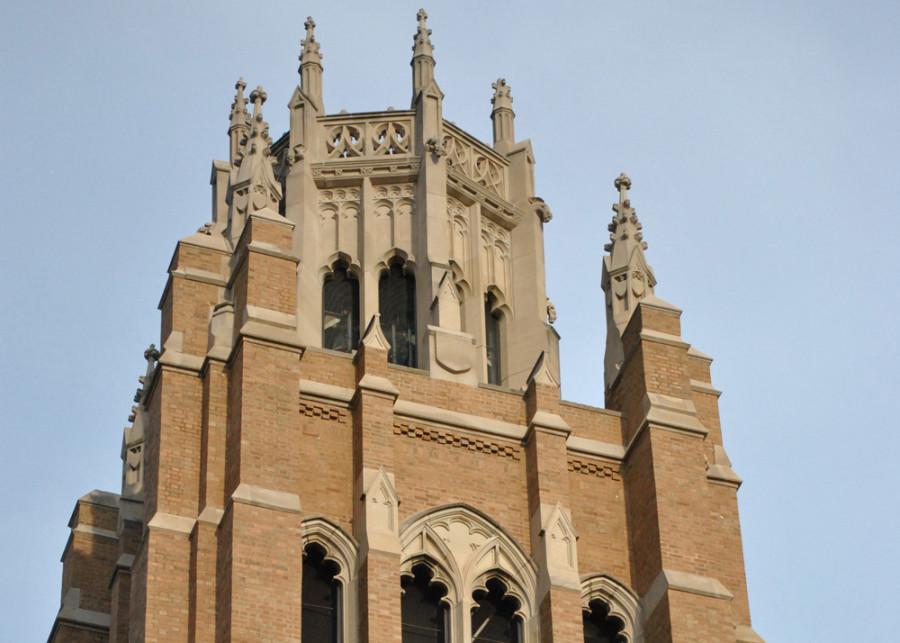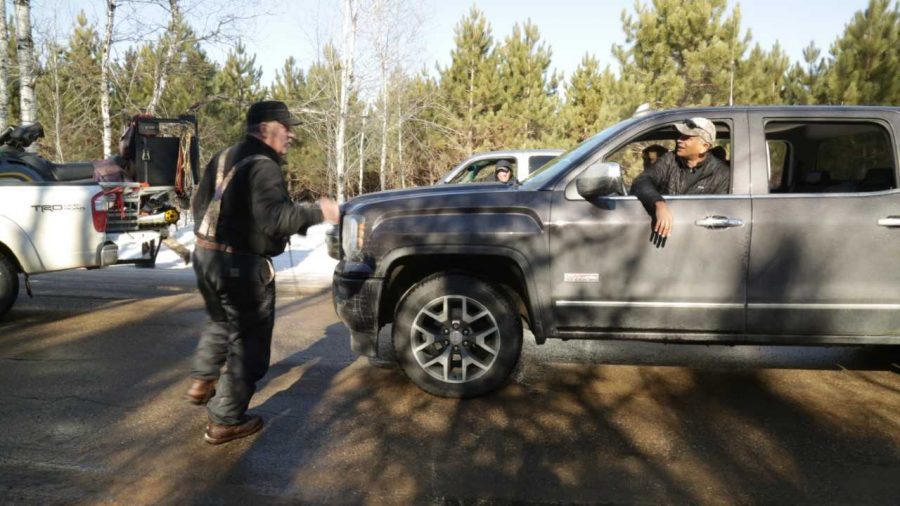Early last week, a student received a photo that contained “disturbing racial overtones,” according to a statement released by the university last Tuesday. The image appears to show four white males. Two of them look to be holding fake guns, and another appears to be holding a black doll.
The student reported the incident to Marquette University Police Department, who immediately devoted “significant resources” to an investigation. The student also submitted a bias incident report, said Xavier Cole, vice president of student affairs.
A second university statement confirmed the university identified all four individuals in the image, and only one of the individuals is a student at Marquette. The statement did not explicitly name the individuals.
Jadah Cadogan, a junior in the College of Arts & Sciences and president of Marquette’s National Association for the Advancement of Colored People chapter, said she first saw the image last week.
“My first reaction was shock and then it was anger and then it was more anger,” she said. “Then it was that this is a problem, and something can be done about it.”
Cadogan wrote an article in an email to NAACP members criticizing Marquette’s response to the image.
“This type of behavior has no place at a University and action should have be (sic) taken immediately but was not. The University FAILED,” Cadogan wrote in the article.
Cadogan said she sent emails to several university leaders and met with them to voice her concerns about the university’s response to the photo. She said the meeting was counter-productive.
“We were like, ‘Who are these kids? Who are they besides the one that I found?’ And he was like, ‘We can’t release that information,’ and I’m like, ‘Okay, but at this point, that’s a threat,’” she said.
Many students gathered to voice their concerns to university leaders, including University President Michael Lovell, Provost Daniel Myers and Cole, at a meeting in the Center for Intercultural Engagement April 25. After an influx of attendees, the event was moved to the AMU Ballrooms, originally to be held in the CIE.
“It was full lecture hall that wasn’t open to the press or media so that there was allowance for our folks to have a conversation freely, so that people can feel safe and so that people can process what they are feeling and what they saw,” Cole said.
At the meeting, Major Cooper, assistant director for African-American services in the CIE, said he thinks students wanted the opportunity to voice their concerns and be heard by administrators. He was made aware of the photo when a student presented it to him and expressed their concerns.
“I charged (students) with clear, concise questions and some possible solutions. They were able to articulate that (at the meeting) and I was proud of them for doing that,” Cooper said.
Cole said the most concerning part of the discussion was students not feeling confident enough to report because they felt as though nothing would happen.
“That’s where a lot of our work needs to be done — making people feel safe that they can report,” he said.
In her article, Cadogan named two people in the photo. MUPD said it could not confirm any details due to student privacy laws.
The student who initially sent the photo could face disciplinary action ranging from probation to expulsion, according to a third statement sent by the university Friday.
Erik Ugland, a professor of digital media and performing arts, said the student who originally sent the photo could also potentially face a criminal charge, depending on the context and the relationship between the sender and receiver.
“If there’s been some ongoing bullying and then the student receives this message, it could possibly be understood as a threat, an act of harassment or intimidation,” Ugland said. “But if the context and the relationship between the parties would suggest that this is offensive but not likely to be perceived as a threat, then it’s a harder argument to make that it’s a criminal act.”
Daijzia Richards, a freshman in the College of Communication, said she was angry when the photo surfaced, but wasn’t shocked.
“Marquette as faculty and university don’t see it as a problem. They focus on other things that are important like sexual assault, but they don’t talk about race,” Richards said.
New initiatives will be seen this fall to promote diversity on campus, Cole said.
“Our job at Marquette, which we will do much more of, is to help provide safe spaces, provide support for our students of color but also for our majority students to provide tools that we need so we will be able to engage in meaningful conversations, solutions, and dialogues that not only make Marquette better, but our city, and then our state,” Cole said. “We’ll start there.”













